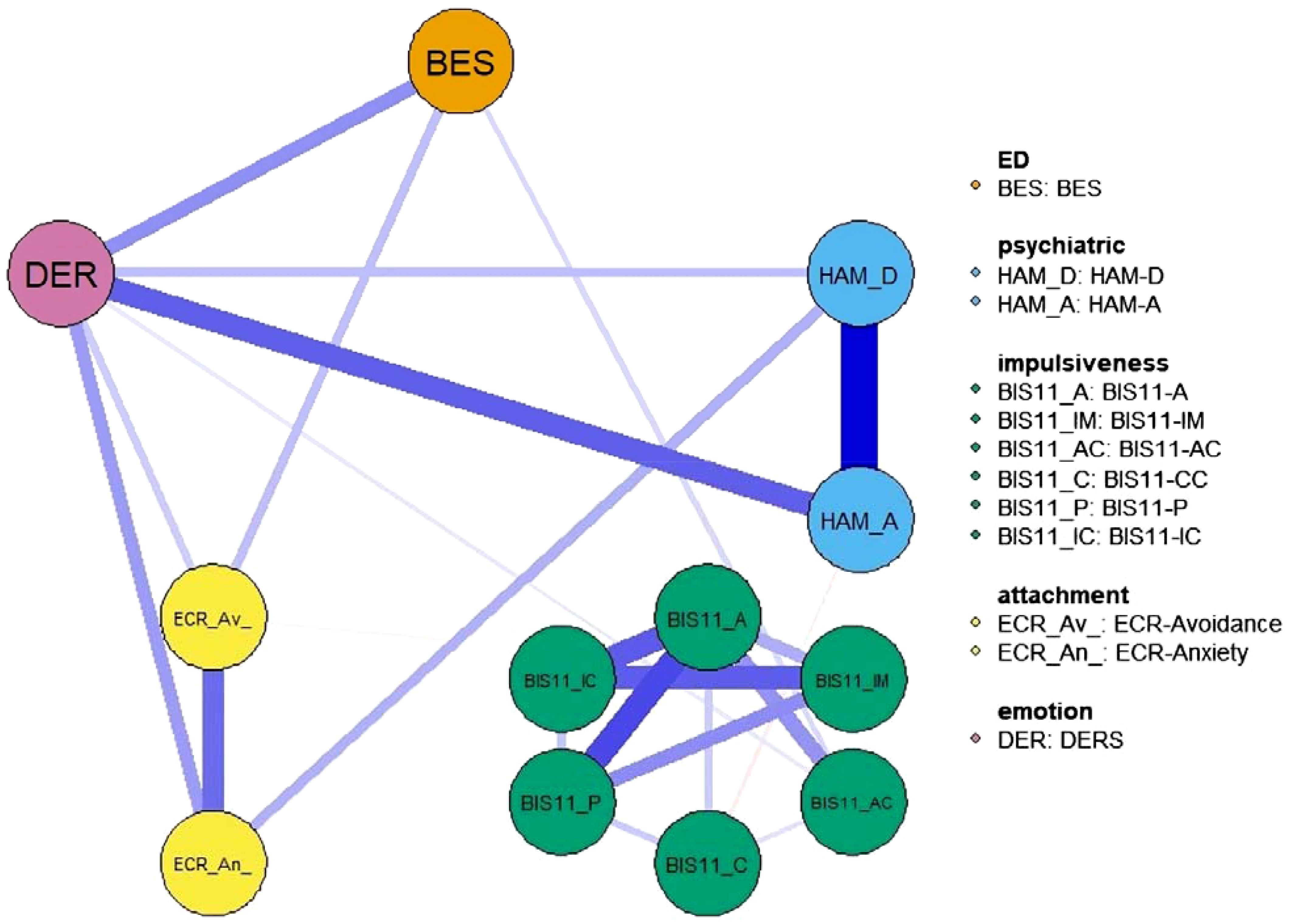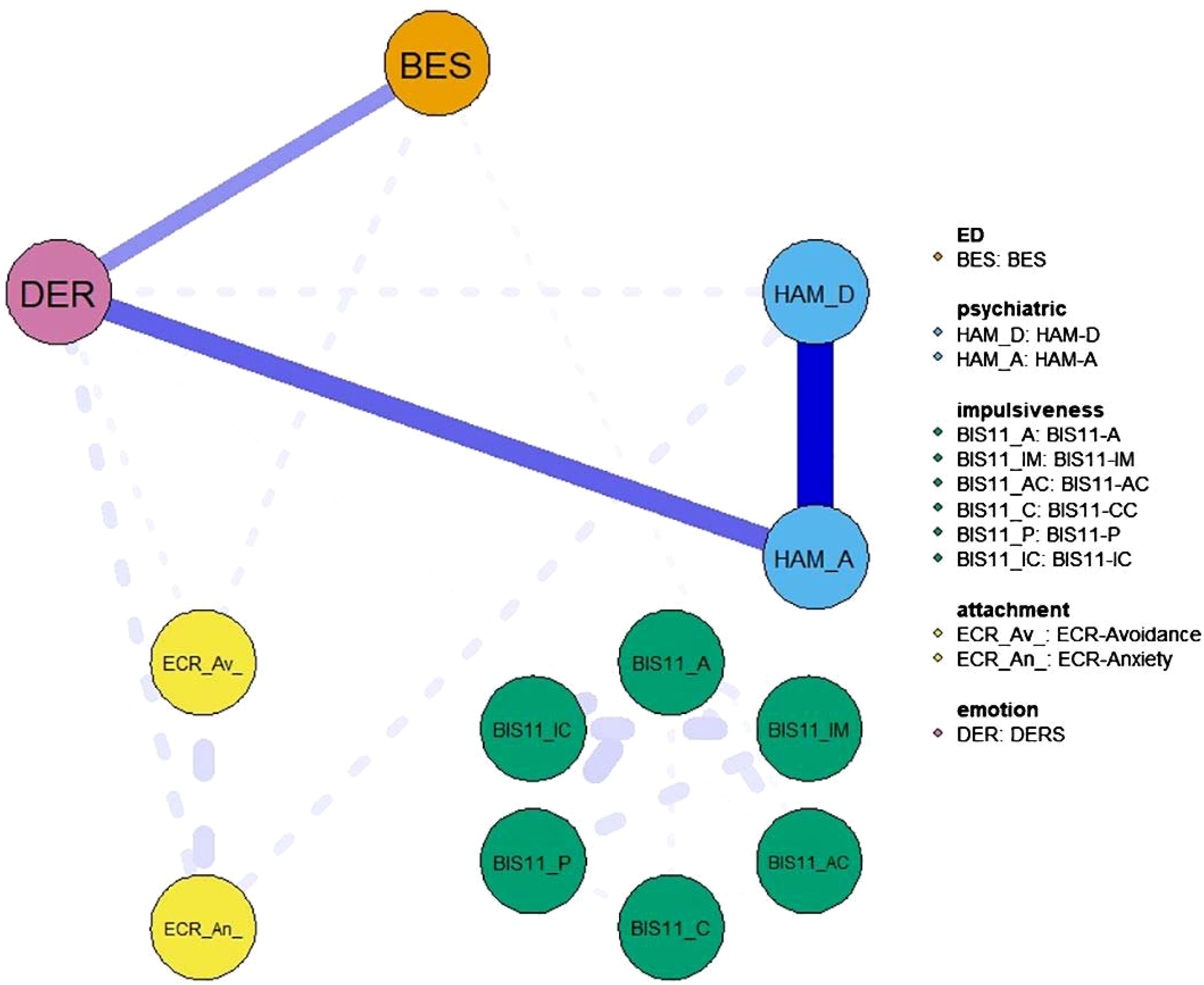- 1Department of Psychiatry, Azienda Socio Sanitaria Territoriale (ASST) Fatebenefratelli-Sacco, Milan, Italy
- 2Department of Psychology, Sigmund Freud University, Milan, Italy
- 3Department of Psychiatry, Faculty of Medicine, University of Geneva, Geneva, Switzerland
- 4Department of Psychiatry, Geneva University Hospital, Geneva, Switzerland
- 5Department of General Surgery, Azienda Socio Sanitaria Territoriale (ASST) Fatebenefratelli-Sacco, Milan, Italy
- 6Institute of Clinical Sciences, Faculty of Medicine, Imperial College London, London, United Kingdom
A Corrigendum on
Emotion dysregulation links pathological eating styles and psychopathological traits in bariatric surgery candidates
By Belloli A, Saccaro LF, Landi P, Spera M, Zappa MA, Dell’Osso B and Rutigliano G (2024). Front. Psychiatry 15:1369720. doi: 10.3389/fpsyt.2024.1369720
In the published article, there was an error in the legends for Figures 1 and 2 as published. The last part of both figure legends originally read: “The color of the edge indicates the size of the association (blue for positive associations; red for negative associations).”

Figure 1. Network structure. The variables include eating disorder-specific scales (BES), psychiatric scales (HAM-D and HAM-A) and psychological and personality scales (BIS-11, ECR and DER). Item groups are differentiated by color. Edge colors represent the direction of associations (blue for positive, red for negative), and edge widths indicate the strength of these associations.

Figure 2. Network showing the shortest path between the BES and Hamilton depression and anxiety scales. The variables include eating disorder-specific scales (BES), psychiatric scales (HAM-D and HAM-A) and psychological and personality scales (BIS-11, ECR and DER). Item groups are differentiated by color. Edge colors represent the direction of associations (blue for positive, red for negative), and edge widths indicate the strength of these associations.
The corrected legends appear below.
FIGURE 1 Network structure. The variables include eating disorder-specific scales (BES), psychiatric scales (HAM-D and HAM-A) and psychological and personality scales (BIS-11, ECR and DER). Item groups are differentiated by color. Edge colors represent the direction of associations (blue for positive, red for negative), and edge widths indicate the strength of these associations.
FIGURE 2 Network showing the shortest path between the BES and Hamilton depression and anxiety scales. The variables include eating disorder-specific scales (BES), psychiatric scales (HAM-D and HAM-A) and psychological and personality scales (BIS-11, ECR and DER). Item groups are differentiated by color. Edge colors represent the direction of associations (blue for positive, red for negative), and edge widths indicate the strength of these associations.
The authors apologize for this error and state that this does not change the scientific conclusions of the article in any way. The original article has been updated.
Publisher’s note
All claims expressed in this article are solely those of the authors and do not necessarily represent those of their affiliated organizations, or those of the publisher, the editors and the reviewers. Any product that may be evaluated in this article, or claim that may be made by its manufacturer, is not guaranteed or endorsed by the publisher.
Keywords: obesity, bariatric surgery, eating style, emotion regulation, network analysis
Citation: Belloli A, Saccaro LF, Landi P, Spera M, Zappa MA, Dell’Osso B and Rutigliano G (2024) Corrigendum: Emotion dysregulation links pathological eating styles and psychopathological traits in bariatric surgery candidates. Front. Psychiatry 15:1495351. doi: 10.3389/fpsyt.2024.1495351
Received: 12 September 2024; Accepted: 18 September 2024;
Published: 30 September 2024.
Edited and reviewed by:
Andreea Oliviana Diaconescu, University of Toronto, CanadaCopyright © 2024 Belloli, Saccaro, Landi, Spera, Zappa, Dell’Osso and Rutigliano. This is an open-access article distributed under the terms of the Creative Commons Attribution License (CC BY). The use, distribution or reproduction in other forums is permitted, provided the original author(s) and the copyright owner(s) are credited and that the original publication in this journal is cited, in accordance with accepted academic practice. No use, distribution or reproduction is permitted which does not comply with these terms.
*Correspondence: Luigi F. Saccaro, bHVpZ2lmcmFuY2VzY28uc2FjY2Fyb0B1bmlnZS5jaA==
†These authors have contributed equally to this work and share first authorship
 Arianna Belloli
Arianna Belloli Luigi F. Saccaro
Luigi F. Saccaro Paola Landi1
Paola Landi1 Grazia Rutigliano
Grazia Rutigliano